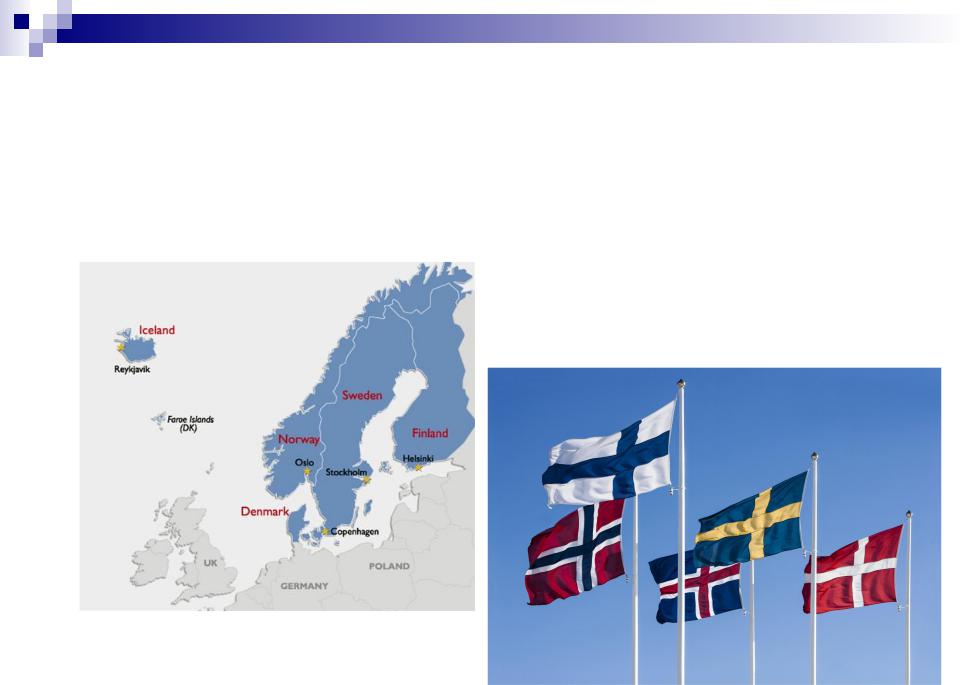
- •Scandinavian law
- •Scandinavian law (i.e. the law of the five Nordic countries, Denmark, Finland, Iceland,
- ••From a legal perspective, the Nordic countries and territories can be divided into
- •The common historical basis of Scandinavian law was Old German law.
- •Scandinavian legislation is mostly uncodified.

Scandinavian law

Scandinavian law (i.e. the law of the five Nordic countries, Denmark, Finland, Iceland, Norway and Sweden) is generally regarded either as a subgroup of civil law or as a legal family of its own.
Roman law has never been applied as applicable law in Scandinavia and there has been no full reception of any other foreign legal system. There are no general civil codes of French, German, Austrian or Italian model in the Scandinavian countries and no plans to enact such codes exist.

•From a legal perspective, the Nordic countries and territories can be divided into an East Scandinavian and a West Scandinavian group;
•Sweden and Finland were until 1809 one country with a centralized governmental structure.
•Modern Icelandic law is normally particularly close to Danish law.
•Norway and Iceland have chosen to stay as EFTA countries (they are not the members of the EU) within the EEA (European Economic Area) for the time being
•Today, there is a growing and quite important cooperation between the Nordic and the Baltic countries, not least in EU related matters. However, there is no common legal tradition in relation to the latter.

The common historical basis of Scandinavian law was Old German law.
During the XVII-XVIII centuries. the starting point of the formation of the legal systems of the Scandinavian countries were two legislative acts: the first is the Code of King Christian V ("Danske Lov"), adopted in Denmark in 1683 (in 1687 its action was extended to Norway under the name "Norwegian Law" - "Norske Lov"), and the second is the Code of Laws of the Swedish state of 1734
The law of 1734, which continues to operate to this day, practically does not include the provisions that were included in it at the time of its adoption.
Scandinavian law is a unified system.
Many issues on which reforms were carried out in continental Europe only after the Second World War were resolved much earlier in Scandinavian law.

Scandinavian legislation is mostly uncodified.
The role of the court is traditionally very significant
Scandinavian and common law are united by a pragmatic approach to law, legal concepts and constructions
Scandinavian law does not know the division of law to public and private
There is no distinction between civil and criminal proceedings
